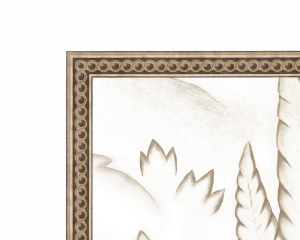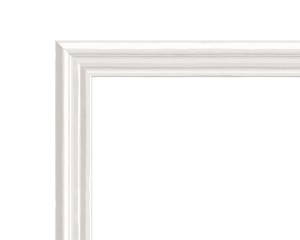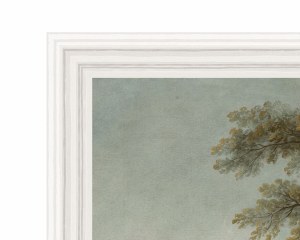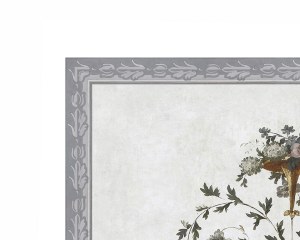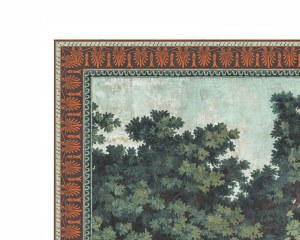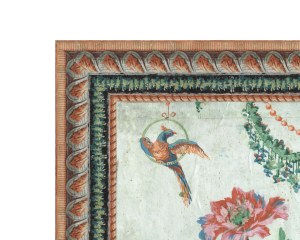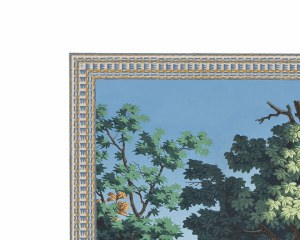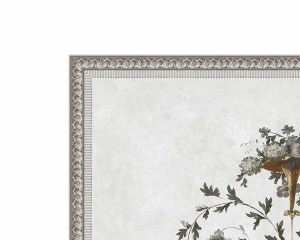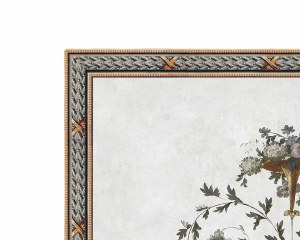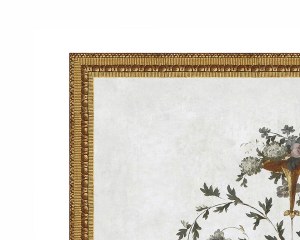The different types of friezes and borders Friezes and borders can be classified as follows: - "Framing" borders: These surround the panoramic wallpaper, creating a frame that delineates and enhances the wall art. - Faux moldings: Simulating traditional moldings, they add an architectural and classical dimension, enriching the wall decoration. - Cornices: Located at the top of the wall, they form an elegant transition between wall and ceiling, completing the decorative ensemble. The style Choosing a frieze for a panoramic wallpaper must respect the style of the wallpaper's era. Historical motifs, such as Louis XVI, Directoire or Empire, have specific stylistic elements that should be respected for visual coherence. For example Louis XVI style: This style is characterized by delicate, symmetrical motifs, often inspired by nature, such as garlands of flowers and ribbons. Directoire style: This favors cleaner lines and geometric patterns, often accompanied by classical motifs such as urns and columns. Empire Style: This more imposing style uses motifs such as eagles, laurel wreaths and military elements. The color The color of the frieze is a key element in ensuring visual harmony. It should create a fluid transition between the panoramic wallpaper and other decorative elements in the room, such as wall paint or faux plain wallpaper. Here are a few tips for choosing the right color: Harmony: The frieze should either complement or subtly contrast with the dominant colors of the panoramic wallpaper. Visual balance: neutral or solid colors can be a good choice for friezes, as they don't draw attention and allow the wallpaper to stand out. History of friezes and borders in wallpaper Appearance of friezes Friezes and borders made their appearance almost simultaneously with the first wallpapers. Their role was to magnify wall compositions and ornament space. In the 19th century, the use of friezes intensified,particularly with the rise of panoramic . Evolution and popularity Over the centuries, friezes and borders have evolved to suit the decorative trends and styles of each era. For example: 18th century: Friezes were often complex, with detailed floral motifs. 19th century: Styles varied widely, from neoclassicism with its geometric motifs and mythological figures, to Victorian eclecticism with its opulent designs. Early 20th century: Art Nouveau introduced large, flowing, natural motifs, while Art Deco, which followed, favored clean lines and geometric shapes. Friezes in modern interiors: Today, friezes and borders are most often used as simple chair rail cords. Using Papiers de Papiers friezes Our products propose to bring back the honor of the classic ornamental decorative frieze. They can be used to : Delineate spaces: By creating visual frames, they help to structure space and define specific areas of a room. Add depth: faux moldings and cornices add an extra dimension to wall decor, creating effects of relief and perspective. |
